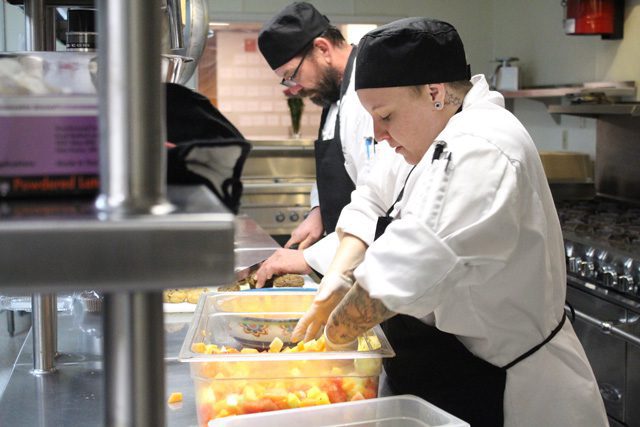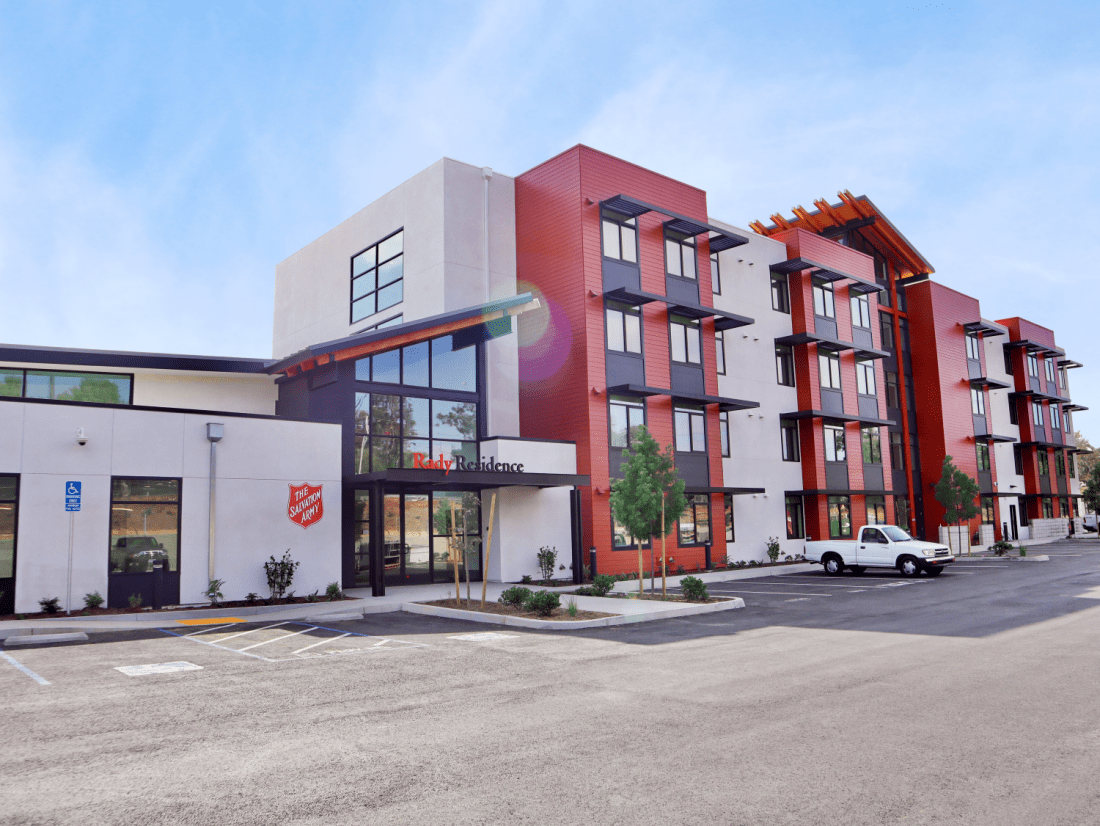Listen to this article
Listen to this article
Loading
Play
Pause
Options
0:00
-:--
1x
Playback Speed- 0.5
- 0.6
- 0.7
- 0.8
- 0.9
- 1
- 1.1
- 1.2
- 1.3
- 1.5
- 2
Audio Language
- English
- French
- German
- Italian
- Spanish
Open text
‘one-way’ out of homelessness. bus tickets back home to loved ones are part of a growing strategy to address homelessness. by jared mckiernan –. on the streets of el cajon, california, just east of downtown san diego, marissa was surviving, just like roughly 300 others. but unlike most of her peers, marissa was homeless right alongside her own mother, and together, they were using drugs. it wasn’t how she envisioned her life, but it sure beat going it alone. after her mom went to jail, marissa was picked up by a local homeless outreach team and taken to the salvation army el cajon corps. she needed a stable living situation if she was ever going to get back on her feet. but instead of placing her in a permanent supportive housing unit or a nearby recovery program, the salvation army did something else: with marissa’s permission, they contacted her father in davenport, iowa. when marissa’s father found out she was living on the streets, he was eager to welcome her back home. so the salvation army set up travel arrangements, and marissa trekked the more than 1,900 miles on multiple buses to reunite with her dad. several months later, when the salvation army called to check in on marissa, her dad proudly reported that she had connected to a local church, and was back on her medication and enrolled in mental health counseling. stories like marissa’s are exactly what the el cajon corps had in mind when it started “a way back home,” (awbh) a homelessness reunification program launched on the back of a $10,000 grant from the local government. now several months into its second year, it’s helped 13 people on the streets of east county san diego reunite with a family member or close friend and find a stable living arrangement. there’s even talk about expanding the program at select locations throughout the county. awbh is part of a growing model that deviates from the long-held approach of utilizing resources in the same continuum of care and keeping clients local. the hope is that, by returning them to the places they previously lived, they can find safe, secure housing with a loved one, rediscover old support networks, and gain access the tools that eventually lead to independent living. “reunification is a great example of a diversion strategy where we’re able to come alongside someone, find out that they have a housing resource somewhere else, and we can keep them from having to stay in a shelter or go homeless in our local community,” said paul armstrong, the salvation army’s social services director for san diego county. the program assists clients with the costs of transportation, usually a bus ticket, lodging, food and re-settlement, as needed. on average, each client placement costs around $350. cheaper than the alternative. it’s that return-on-investment that has officials taking note. “one of the things you always have to do is show how much money you can save,” armstrong said. “that’s why the federal government loves rapid rehousing, is because it’s proven to be cheaper, as compared to transitional housing.”. in an evaluation of 14 continuum of cares in seven states, 75 percent of rapid re-housing participants were found to exit to permanent housing, much higher than from emergency shelter (16 percent) or transitional housing (42 percent). the average cost per exit to permanent housing was significantly lower for rapid re-housing (about $4,100) than it was for either shelter (about $10,000) or transitional housing (about $22,200). but not even rapid rehousing can stack up to the frugality of reunification programs, which is, on paper, often as cheap as a one-way bus ticket. yet the true cost is harder to quantify, as these programs typically require a lot of case management up front. according to armstrong, making sure you get a good return-on-investment boils down to two things. “you have to have the right people doing quality screening on the front end to make sure it’s a good match, and also creating the connection to that [destination community] on the back end,” he said. “i think those two have to go hand-in-hand. the goal isn’t to get someone a bus ticket—it’s to get them back into a stable housing situation.”. it’s a delicate balance to strike. in santa maria, california, the salvation army formed a reunification program as a solution to residents’ complaints about the problems associated with the city’s rise in homelessness. one of the things the corps staff learned early on, was that it’s generally better to have stricter criteria up front to avoid people taking a bus out of town, only to end up back at the corps six months later. “it’s important to establish some kind of relationship with these clients,” said santa maria corps officer lt. patty torres. “anybody can say ‘i want to go home.’ but we really want to be available for those individuals who are serious.”. ‘greyhound therapy’. the guardian recently did an 18-month investigation of homeless reunification programs, analyzing more than 21,000 trips taken in the past six years from 16 cities or counties in the u.s. while the report included several positive outcomes, it noted that follow-up efforts once clients leave town tend to be a little nebulous. in san francisco, for example, from 2010 to 2015, only three travelers were contacted after they left. such hazy progress reports have fueled criticism that these programs merely shuffle the homeless from one place to another without any real regard for their well-being. some have gone further, calling them ”greyhound therapy,” a nod to the popular intercity bus carrier. “sometimes, when you talk about reunification, people say you’re just trying to shift the problem away,” armstrong said. “one of the urban legends is that las vegas sent all of their homeless folks to san diego. so any time you talk about bussing a homeless person out of a community, there’s some concern. so that’s one of the barriers you have to navigate.”. therein lies the importance of periodic checkups and progress reports. the awbh program, for instance, makes it a point to stay connected with clients once they arrive at their destination. its “secret weapon” as armstrong put it: leveraging the salvation army’s vast network of service centers spanning every zip code in the country. if a client departs from the salvation army in el cajon, they make sure they’re received by the salvation army wherever it is they end up. it’s that continuity that often pays dividends, for both the client and the referral agency. captain bonita kelsey, el cajon corps officer, shared a story about a client who had detoxed from heroin and meth for 10 days before coming to the salvation army looking to both get clean and return home to indiana. the corps connected him to an adult rehabilitation center in indiana, which did the intake interview with him over the phone before the el cajon corps sent him there. “so, that gives us a lot of hope that he’s going to a safe place once he gets there,” kelsey said. steve berg, vice president of program and policy for the national alliance to end homelessness, said the referral agency’s most valuable resource is often the receiving family, who may have inside knowledge on how to best east the transition for the client. “obviously, you have to make sure the client knows how to access whatever kind of help they need in the community they’re going to be living in,” berg said. “but i think, beyond referrals, it’s important to be working with the client’s receiving family to understand what the person’s needs really are, particularly if it’s someone with a disability or mental health issue.”. one piece of the puzzle. of course, for all of the buzz surrounding reunification programs, it’s important to note—they’re not a panacea for homelessness. there isn’t one single intervention that works for everyone, because every situation is unique. some people are homeless in the same city they’re from. others can’t easily reconcile their differences with their loved ones with whom they’ve lost contact. and even for those who can, some of those reunions are short-lived. several months ago, the santa maria corps reported that, after one of its successful reunifications, a staff member was able to establish initial contact with the client, who had moved into a home with her daughters in texas. however, at the six-month mark, the staff member called again, only to learn that the mother had disappeared and her daughters didn’t know where to. it’s part of the challenge of running such programs. the referral agency is not around to check in on clients once they leave, so they have to place a certain amount of trust in the casework they did before the client left. not every client follows a linear path to independent living. still, despite the occasional hiccup and limits in scalability, berg noted that, when done right, reunification programs are still one of the more practical and cost-effective methods of homeless intervention. “one of the main differences between people who are homeless and low-income individuals who aren’t homeless, is that people who are homeless often don’t have as many family connections,” berg said. “but i do feel that [when possible] reunification programs are a good option for people who are homeless. they’re some of the best stories you hear, and they should be one of the first options considered.”.
Open context player
Close context player
Plays:-Audio plays count
‘one-way’ out of homelessness. bus tickets back home to loved ones are part of a growing strategy to address homelessness. by jared mckiernan –. on the streets of el cajon, california, just east of downtown san diego, marissa was surviving, just like roughly 300 others. but unlike most of her peers, marissa was homeless right alongside her own mother, and together, they were using drugs. it wasn’t how she envisioned her life, but it sure beat going it alone. after her mom went to jail, marissa was picked up by a local homeless outreach team and taken to the salvation army el cajon corps. she needed a stable living situation if she was ever going to get back on her feet. but instead of placing her in a permanent supportive housing unit or a nearby recovery program, the salvation army did something else: with marissa’s permission, they contacted her father in davenport, iowa. when marissa’s father found out she was living on the streets, he was eager to welcome her back home. so the salvation army set up travel arrangements, and marissa trekked the more than 1,900 miles on multiple buses to reunite with her dad. several months later, when the salvation army called to check in on marissa, her dad proudly reported that she had connected to a local church, and was back on her medication and enrolled in mental health counseling. stories like marissa’s are exactly what the el cajon corps had in mind when it started “a way back home,” (awbh) a homelessness reunification program launched on the back of a $10,000 grant from the local government. now several months into its second year, it’s helped 13 people on the streets of east county san diego reunite with a family member or close friend and find a stable living arrangement. there’s even talk about expanding the program at select locations throughout the county. awbh is part of a growing model that deviates from the long-held approach of utilizing resources in the same continuum of care and keeping clients local. the hope is that, by returning them to the places they previously lived, they can find safe, secure housing with a loved one, rediscover old support networks, and gain access the tools that eventually lead to independent living. “reunification is a great example of a diversion strategy where we’re able to come alongside someone, find out that they have a housing resource somewhere else, and we can keep them from having to stay in a shelter or go homeless in our local community,” said paul armstrong, the salvation army’s social services director for san diego county. the program assists clients with the costs of transportation, usually a bus ticket, lodging, food and re-settlement, as needed. on average, each client placement costs around $350. cheaper than the alternative. it’s that return-on-investment that has officials taking note. “one of the things you always have to do is show how much money you can save,” armstrong said. “that’s why the federal government loves rapid rehousing, is because it’s proven to be cheaper, as compared to transitional housing.”. in an evaluation of 14 continuum of cares in seven states, 75 percent of rapid re-housing participants were found to exit to permanent housing, much higher than from emergency shelter (16 percent) or transitional housing (42 percent). the average cost per exit to permanent housing was significantly lower for rapid re-housing (about $4,100) than it was for either shelter (about $10,000) or transitional housing (about $22,200). but not even rapid rehousing can stack up to the frugality of reunification programs, which is, on paper, often as cheap as a one-way bus ticket. yet the true cost is harder to quantify, as these programs typically require a lot of case management up front. according to armstrong, making sure you get a good return-on-investment boils down to two things. “you have to have the right people doing quality screening on the front end to make sure it’s a good match, and also creating the connection to that [destination community] on the back end,” he said. “i think those two have to go hand-in-hand. the goal isn’t to get someone a bus ticket—it’s to get them back into a stable housing situation.”. it’s a delicate balance to strike. in santa maria, california, the salvation army formed a reunification program as a solution to residents’ complaints about the problems associated with the city’s rise in homelessness. one of the things the corps staff learned early on, was that it’s generally better to have stricter criteria up front to avoid people taking a bus out of town, only to end up back at the corps six months later. “it’s important to establish some kind of relationship with these clients,” said santa maria corps officer lt. patty torres. “anybody can say ‘i want to go home.’ but we really want to be available for those individuals who are serious.”. ‘greyhound therapy’. the guardian recently did an 18-month investigation of homeless reunification programs, analyzing more than 21,000 trips taken in the past six years from 16 cities or counties in the u.s. while the report included several positive outcomes, it noted that follow-up efforts once clients leave town tend to be a little nebulous. in san francisco, for example, from 2010 to 2015, only three travelers were contacted after they left. such hazy progress reports have fueled criticism that these programs merely shuffle the homeless from one place to another without any real regard for their well-being. some have gone further, calling them ”greyhound therapy,” a nod to the popular intercity bus carrier. “sometimes, when you talk about reunification, people say you’re just trying to shift the problem away,” armstrong said. “one of the urban legends is that las vegas sent all of their homeless folks to san diego. so any time you talk about bussing a homeless person out of a community, there’s some concern. so that’s one of the barriers you have to navigate.”. therein lies the importance of periodic checkups and progress reports. the awbh program, for instance, makes it a point to stay connected with clients once they arrive at their destination. its “secret weapon” as armstrong put it: leveraging the salvation army’s vast network of service centers spanning every zip code in the country. if a client departs from the salvation army in el cajon, they make sure they’re received by the salvation army wherever it is they end up. it’s that continuity that often pays dividends, for both the client and the referral agency. captain bonita kelsey, el cajon corps officer, shared a story about a client who had detoxed from heroin and meth for 10 days before coming to the salvation army looking to both get clean and return home to indiana. the corps connected him to an adult rehabilitation center in indiana, which did the intake interview with him over the phone before the el cajon corps sent him there. “so, that gives us a lot of hope that he’s going to a safe place once he gets there,” kelsey said. steve berg, vice president of program and policy for the national alliance to end homelessness, said the referral agency’s most valuable resource is often the receiving family, who may have inside knowledge on how to best east the transition for the client. “obviously, you have to make sure the client knows how to access whatever kind of help they need in the community they’re going to be living in,” berg said. “but i think, beyond referrals, it’s important to be working with the client’s receiving family to understand what the person’s needs really are, particularly if it’s someone with a disability or mental health issue.”. one piece of the puzzle. of course, for all of the buzz surrounding reunification programs, it’s important to note—they’re not a panacea for homelessness. there isn’t one single intervention that works for everyone, because every situation is unique. some people are homeless in the same city they’re from. others can’t easily reconcile their differences with their loved ones with whom they’ve lost contact. and even for those who can, some of those reunions are short-lived. several months ago, the santa maria corps reported that, after one of its successful reunifications, a staff member was able to establish initial contact with the client, who had moved into a home with her daughters in texas. however, at the six-month mark, the staff member called again, only to learn that the mother had disappeared and her daughters didn’t know where to. it’s part of the challenge of running such programs. the referral agency is not around to check in on clients once they leave, so they have to place a certain amount of trust in the casework they did before the client left. not every client follows a linear path to independent living. still, despite the occasional hiccup and limits in scalability, berg noted that, when done right, reunification programs are still one of the more practical and cost-effective methods of homeless intervention. “one of the main differences between people who are homeless and low-income individuals who aren’t homeless, is that people who are homeless often don’t have as many family connections,” berg said. “but i do feel that [when possible] reunification programs are a good option for people who are homeless. they’re some of the best stories you hear, and they should be one of the first options considered.”.
Listen to this article
















